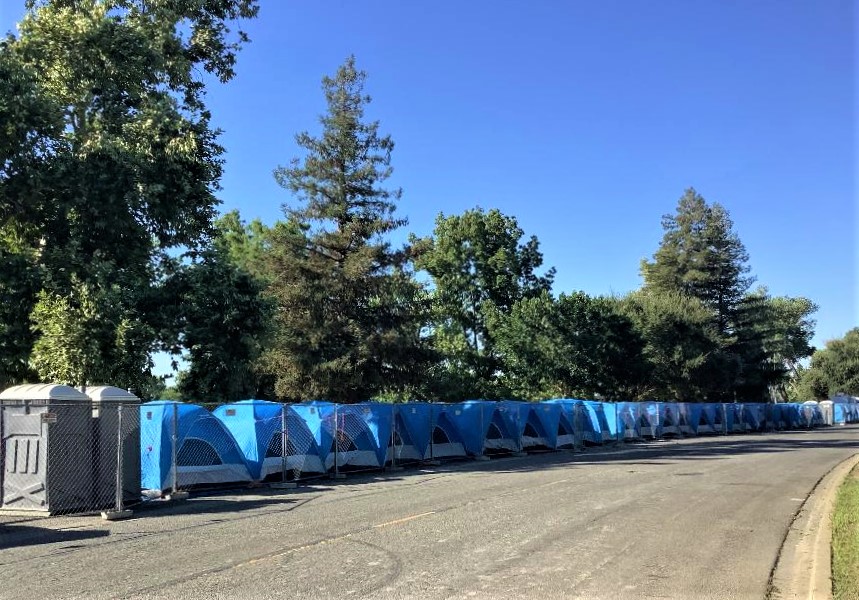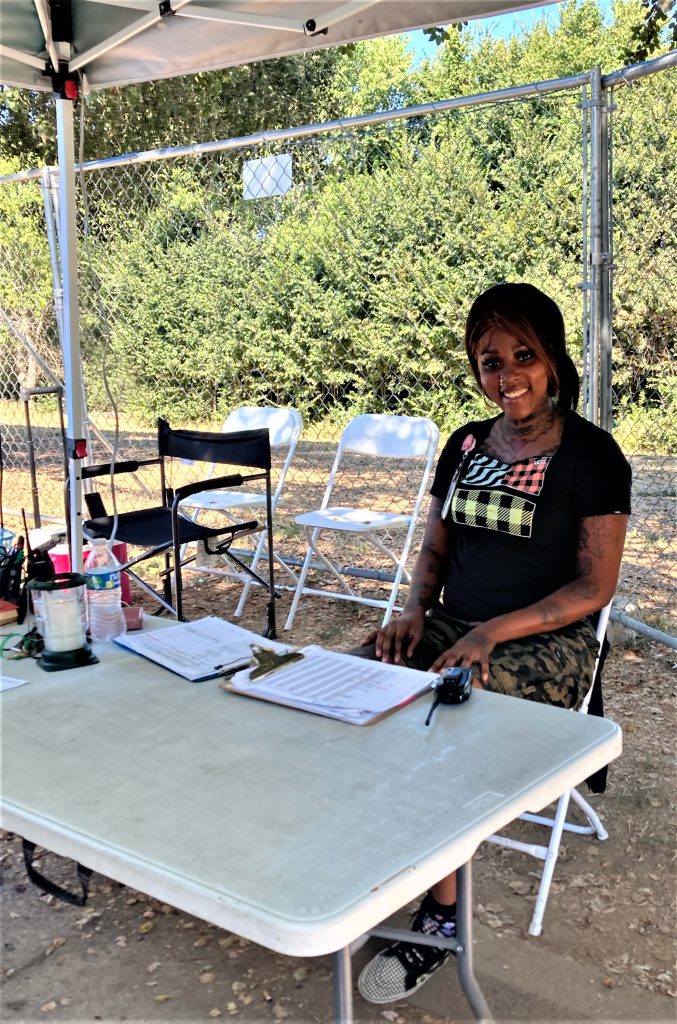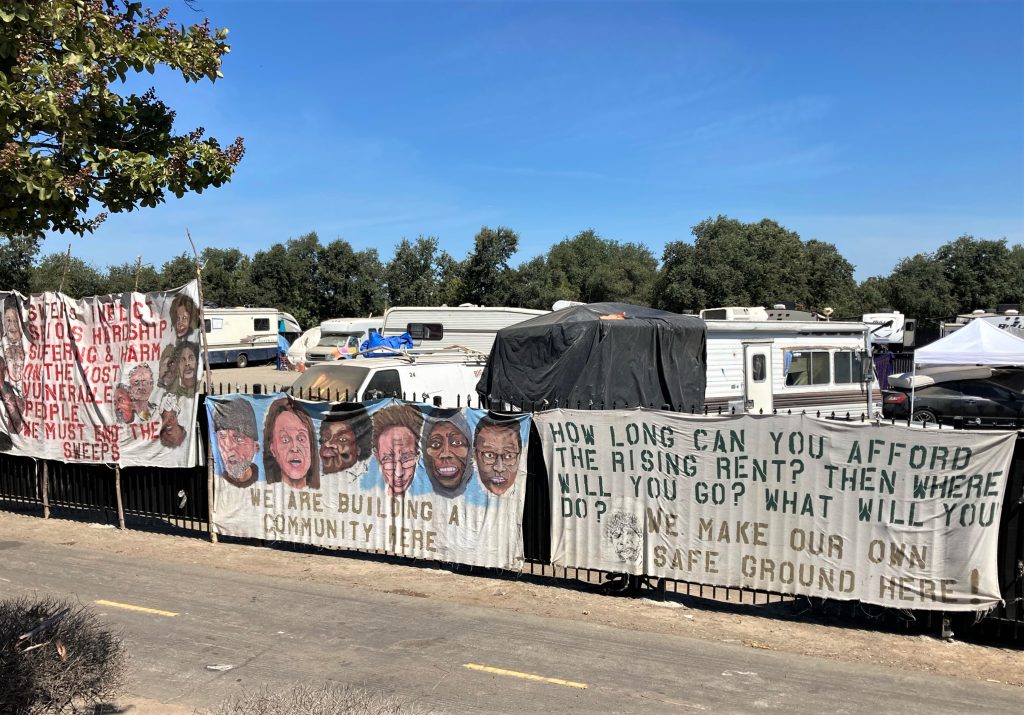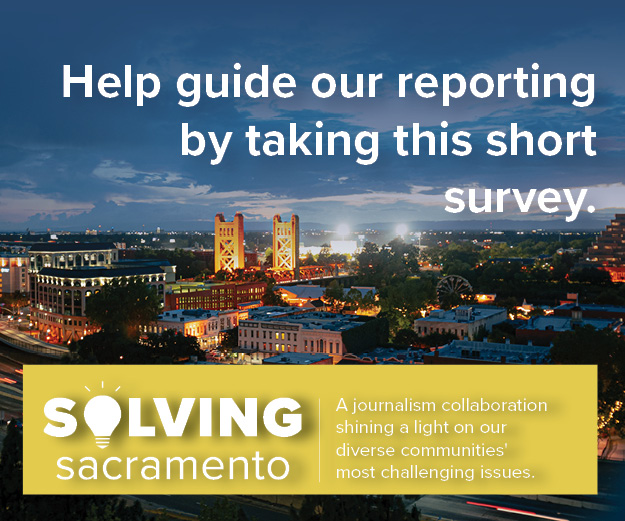By Ken Magri
In an effort to improve Sacramento’s homeless situation, the city recently expanded its official encampment at Miller Park, allowed a second self-governing encampment in Del Paso Heights to stay and vowed to find more camping sites before asking unhoused people to vacate city sidewalks.
This is all part of a program called Safe Ground Sacramento, where people who are unhoused are given safe locations to park their vehicles or belongings as they attempt to find a better living situation. While the two sites have different backstories, each may be providing hope and dignity to tenants. Both operate at a relatively low cost to the city, keeping over 200 homeless people closer to city and county services and safe from the streets.
“By creating more options such as safe-ground sites, the City can provide safer temporary solutions to those experiencing homelessness while connecting them to wrap-around services, so they can ultimately transition into more permanent housing,” said Katharine Weir-Ebster, a media and communications specialist for the City of Sacramento.
Safe Ground Miller Park

Last autumn, the city set up 60 homeless tents at Miller Park, facilitated by the nonprofit First Step Communities. But the tents had to be removed weeks later, when Sacramento’s furious string of winter rainstorms and the rising Sacramento River threatened to flood the location.
After a six-month absence, 60 new and larger tents returned to Miller Park, sitting alongside an additional group of 17 recreational trailers also provided by the city. Together, the tents and trailers turn Marina Drive into a homeless community with accommodations of up to 150 people. “The purpose is to provide a place of stability and safety,” said Joe Pacheco, Chief Operating Officer at First Step Communities. ”People get a tent, a cot, some storage bins, clean water and two meals a day.”
The site also includes bathrooms, shaded dining areas, an outdoor misting system, charging stations for cell phones and a mobile unit for hot showers. Daily staffing includes maintenance workers and four case managers. Each tenant gets assigned to a case manager for things like getting ID, documents, health evaluations or anything needed to transition into permanent housing.
“We don’t require our tenants to be clean [from drug addiction]. We’ll work with them,” said Pacheco. “We have mental health, physical health coming out, the UC Davis School of Nursing comes out.”

One new tenant, Anthony Tyler, had been living on a Stockton Boulevard sidewalk since 2018. Although he receives Social Security, he still couldn’t afford an apartment in Sacramento, which averages around $1,800 per month.
“They said they’d try to get me into a residence, like splitting a house with three or four people and everybody gets a room,” said Tyler. “I have mental health issues and medical issues, but here you can see a doctor every Friday. It’s a big help.”
First Step Communities research shows that if an unhoused person can stay in a transitional facility like Safe Ground for at least 60 days, they are twice as likely to become permanently housed.
With an annual cost of $3.2 million, Pacheco feels that the mobility and low cost of Safe Ground Miller Park would allow the idea to be repeated. “You could set one of these up anywhere, within a week or two. Then, if the need is diminished, you can pop it up in a neighborhood with the same situation.”
Camp Resolution

Located inside a 2.3-acre empty lot at Colfax Street and Arden Way, Camp Resolution is a self-governing encampment of 60 people. In 2021, the site was originally designated for 25 tiny houses for homeless tenants. But the Central Valley Regional Water Quality Control Board later fenced off the lot, saying that the soil is contaminated.
Last October, around 30 homeless people cut the locks and began to occupy the lot. When the city threatened to sweep them out, they went to City Hall and to court, arguing that all people have the right to exist somewhere and that local police sweeps of homeless people should end.
After months of legal wrangling, the City of Sacramento agreed to unofficially host the group, now calling the site Camp Resolution. In late March, homeless advocate and attorney Mark E. Merin and the city agreed to a no-cost, renewable 120 day lease for the camp.
The lease deemed Camp Resolution a “safe parking shelter,” making it exempt from the California Environmental Quality Act. Despite the contaminated soil discovery, the lot is deemed safe for this current use. Now at full capacity, Camp Resolution has a waiting list of 745 people, according to co-founder and resident Sharon Jones.
Tenants created their own camp council, although they prefer to make decisions by consensus. “We have conflicts every now and then, but we resolve them,” says co-founder Joyce Williams.
The city agreed in the lease to help with “services,” but did not specify health or human services. Weir-Webster said this is Sacramento County’s responsibility. As a result, no such services are currently being offered.
The city recently donated 17 trailers, albeit without hook-ups. As the lease holder, attorney Merin is negotiating a renewal starting Aug. 24, hoping to add electricity and water. Williams compared the inside of the trailers these days to “death boxes,” too hot to occupy in daylight hours. The camp’s Facebook page and Instagram page regularly request donations of water and ice from the public.
Finding more new sites faster

On Aug. 1, the Sacramento City Council authorized City Manager Howard Chan to find more Safe Ground camping sites and spend up to $5 million opening them “without coming back to the city council for approval,” according to the government’s newsletter, City Express.
More authorized camping sites would justify the city’s effort to step up local ordinance enforcement and require people sleeping on sidewalks to move. “This is common sense,” said Mayor Steinberg after the 5-4 authorization vote. “When we do move people, it does in fact beg the question: Where are they going to go?”
Weir-Ebster confirmed that the city manager is currently working with staff to identify those future safe ground sites.
This story is part of the Solving Sacramento journalism collaborative. Solving Sacramento is supported by funding from the James Irvine Foundation and Solutions Journalism Network. Our partners include California Groundbreakers, Capital Public Radio, Outword, Russian America Media, Sacramento Business Journal, Sacramento News & Review, Sacramento Observer and Univision 19. Take our reader survey.




Be the first to comment on "Sacramento homeless sites expanding: One official encampment grows while an unplanned one is approved"